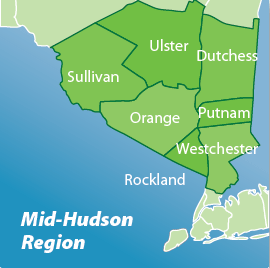
In Gardiner, it seems we have to drive to get anywhere and everywhere. So when someone asks—how we can reduce our greenhouse gas emissions in the area?—It’s hard not to answer: well, we can’t. We like where we live, and it’s just the type of place one has to drive.
But, as a new planning process is showing, there are lots of things we can do to help the region go green. The Mid-Hudson Sustainability Planning Consortium has kicked off an ambitious smart growth planning process to help reduce greenhouse gas emissions in the region, and the community’s got a chance to get involved.
As part of the Greener, Cleaner Communities Program, each of New York State’s 10 economic development regions is creating a plan to help achieve Governor Cuomo’s goal of reducing greenhouse gas (GHG) emissions to 80 percent below 1990 levels by the year 2050. Statewide, there will be up to $90 million available, via competitive grants, to fund projects identified in the different regions’ plans. Despite the promise of funding for projects that come out of the planning process, achieving a Mid-Hudson consensus will take hard work. An aggressive schedule has been set for delivery of the plan by the end of December, and the Mid-Hudson plan covers a sprawling, seven-county region with urban, suburban, and rural issues to contend with (the area includes Westchester, Rockland, Orange, Ulster, Putnam, Sullivan, and Dutchess counties).
Several working groups have been established, headed up by a broad representation of individuals from the public and private sectors in the region: energy; materials management; water management; economic development; agriculture and foodsheds; transportation, land-use and livable communities; governance; and climate change. An example of one of the ideas put on the table is a regional composting facility. Take the millions of pounds of yard waste that Westchester usually hauls off to the dump, combine it with the food wastes from the region, and we’ve got fabulous, rich compost that can be sold to beef up our gardens, less dump waste (which produces GHG emissions) and readily available home-grown soil enricher.
To chime in, visit www.engagemidhudson.com and add your thoughts. A draft plan and public meeting about the plan will be announced this fall, so stay tuned.
